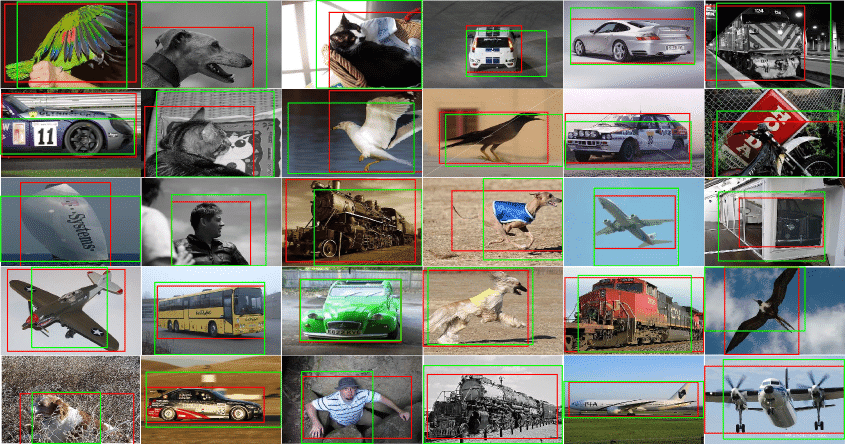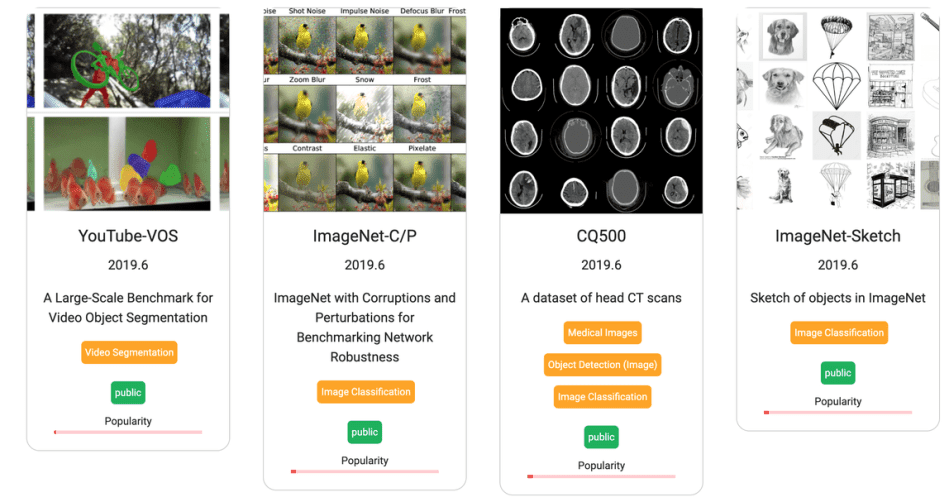
It is well known that data science teams dedicate significant time and resources to developing and managing training data for AI and machine learning models — and the principal requisite for it is high-quality computer vision datasets. It is common for problems to stem from poor in-house tooling, labeling rework, difficulty locating data, and difficulties in collaborating & iterating on distributed teams’ data.
An organization’s development can be hindered by frequent workflow alterations, large datasets, and an ineffective data training workflow. Growing too rapidly, which is common for startups, regardless of their industry, aggravates these issues.
An example is the highly-competitive autonomous vehicle industry, where scalable training-data strategies are vital. The computer vision market for self-driving vehicles is high in complexity and competition. If your team cannot adapt (including the ability to annotate data), your business can suffer from customer dissatisfaction. Because of the complexity of training data, definitions and scope are constantly changing; if you cannot adapt, you can lose a lot of money.
Identifying the Right Data Annotation Strategy
Several reasons can explain why your training data strategy must adapt quickly. It could be because new product features generate an important volume of raw data that needs to be labeled, or you have decided to develop a solution that requires a significant volume of real-time data to perform well.
Moreover, ML model performance can often disappoint, especially in proofs-of-concept or early versions. Finding the optimal data annotation strategy can come late in the development process when a lot of money and time has already been spent.
Furthermore, some AI projects based on a large volume of data often require a feedback loop. It is often the case when neural networks are used to improve with each new case and tackle edge
cases continuously. ML requires iterative data annotation processes. Data annotation feedback loops and agile methodologies are critical for success.
Regardless of your situation, you can either react by hiring an internal team of annotators, which can be expensive, work with freelance annotators, or rely on a data annotation platform. Let’s see the pros and cons of each approach.
- Building In-house Teams
Some companies choose to create an in-house data annotation team. A good reason to build an in-house data annotation could be related to security. Perhaps your projects’ nature requires labeled data that cannot be transmitted online.

Building an internal data annotation certainly brings benefits of process control and QA but also carries additional costs and risks:
- HR resources
- Management of a new team
- Software development to support data annotation and workflows,
- Risk of constant staff turnover
This method is not scalable. Like all companies involved with AI, your data needs may heavily evolve based on your current and future projects as you invest in hiring, managing, and training employees. Concretely, if you decide to build an in-house data annotation team, you will also require annotation tools. Unfortunately, teams that try to build in-house tech solutions often lose strategic development time rather than outsourcing the data annotation process.
While this method may seem more cost-effective at the start of your project, it’s often not a scalable solution due to operational infrastructure challenges, lack of training data know-how, and skills gaps for internal annotators.
Unless you work for a large tech company, chances are your internal tool will probably never be as advanced as an end-to-end data labeling tool built by many specialized developers and iterated over several years. Third-party data annotation tools are usually more sophisticated and come with experienced annotators and skilled project managers.
2. Choosing an Outsourced Data Processing Company
In this context, outsourcing refers to getting an industry expert on board to perform data processing tasks for AI and machine learning initiatives. The remuneration is often low and based on the volume of work. A prime example of this solution is Amazon Mechanical Turk.
This approach is considered an easy way to collaborate with an on-demand workforce. However, it forces you to define the assignment accurately and identify specific requirements & payment conditions. Conveying your idea clearly to the outsourced data annotation & labeling company behind your ML model is of the utmost significance — the blurry sense of your AI project to the outsourced company may lead to nothing but disaster. So picking the right data processing partner is important. Companies such as Cogito, Anolytics, and a few more offer high-quality custom data to train AI models by the in-house workforce and efficient workflow.
Some companies have built a crowd-as-a-service data platform and license data platforms. These platforms manage the workflow and sourcing of workers. Leveraging such data platforms will enable you to scale quickly with competitive pricing. However, because this approach is often used for small-size and temporary projects, there is no feedback loop and opportunity to train labelers over time.
Another aspect worth mentioning is that outsourced labelers tend to suffer from a lack of expertise, leading to poor training data quality. Give experience and expertise priority when picking your annotation & labeling partner to process your data for your AI model.
Data security is also challenging, as outsourced labelers often work independently on unsecured computers. Depending on your project’s importance, complexity and scope, outsourcing platforms can be an easy and cheap solution to label your data. But the low price comes at the cost of reduced data set quality, consistency, and confidentiality
3. Data Platform + Workforce
Another solution available on the market is related to companies that have built and sold their own data platform. These self-service platforms enable companies to efficiently self-manage their annotation projects with advanced capabilities, robust UI, advanced annotation tools, and, in some cases, ML-assisted annotation features.
ML teams can more easily manage labeling workflows by leveraging these platforms to produce quality computer vision training data while reducing labeling time compared with outsourcing platforms. They can also rely on some on-demand project managers to help structure their projects. Non-advanced transparent quality processes are also part of the offering from these platforms.
These SaaS-based platforms are known for their ability to scale quickly and provide competitive pricing. However, most of them are highly dependent on partners to secure the necessary non-contracted workforce.
This dependency often leads to a lack of expertise from their labelers, uptime issues, and ultimately poor quality labeled datasets (often the case for complex projects).
Another worth mentioning element is that these platforms are often mainly specialized in a specific industry (e.g., data labeling for the autonomous vehicles industry) or AI subfield (e.g., computer vision or NLP).
4. Platform + Fully Managed Workforce
Annotation solutions for data are offered by companies that have developed and sold their own data platforms and have fully managed workforces. The major difference between these platforms and other solutions is that such platforms depend on experienced labelers and subject matter experts for identifying edge cases and suggesting best practices for annotation.
These platforms rely heavily on both human expertise and automated data annotation tools to adapt to new guidelines or computer vision datasets requirements quickly, allowing them to be implemented same-day or next-day. By leveraging human expertise, edge cases will be identified proactively, guidelines will be recommended, and models will be developed faster.
Annotation time can be reduced by leveraging advanced tools used by industry experts. However, fully-managed services cost more than other data annotation solutions in terms of pricing because they cover the entire training data cycle.
5. ML-Assisted Annotation
A growing company tends to have an increasing amount of data to label. When this data is large, manual labeling becomes challenging. ML-assisted annotation can help solve this problem.
The goal of machine learning-assisted annotation is to reduce the time annotators spend annotating by making it possible for them to spend more time correcting complex cases so the machine learning models can be developed further by performing close-to-perfect annotations (covering all important annotation types).
Annotation tools that use machine learning are defined and automated according to different standards. Some allow users to create new neural networks from scratch, while others use pre-trained ones.
Because of this, the model is able to predict classes from an unlabeled image set. This results in annotation tasks turning into evaluation tasks after human annotators have reviewed and corrected them. Additionally, manual annotations are most useful in challenging edge cases, and machine learning-assisted annotation tools have proven to be effective in large datasets as well.
As a result, the annotator can see the suggested labels and only have to review them, while other solutions show only those images with the highest or lowest confidence for label confirmation; data annotation flexibility means you can find errors in your dataset in minutes rather than days.
Annotation tools that use machine learning can integrate a feedback loop, so that after reviewing the images, the user can add the images to a computer vision training data in order to train a more accurate neural network. Reinforcement learning, for instance, can mimic the decision-making process of annotators. the reinforcement agent identifies alarm data based on the annotations made by humans.
An image annotation tool that identifies polygons based on class is available in some data annotation tools. A polygon prediction is provided by the network after the annotator marks the selected object. The user can also use a pre-trained segmentation model to create a rough mask of unlabeled images automatically. A number of other features are available, including the ability to switch between labels & methods and the ability to reach output faster.
6. Promising Quality & Deadlines
The best way to optimize workflows as your company grows is to create in-house teams to analyze data, outsource it, or utilize a machine learning-based data platform. An ideal tool would be one that reprioritizes tasks automatically, provides feedback, and tracks production models.
Developing a fast model requires a deep understanding of the classes represented and the edge cases in a computer vision dataset. Data training strategies need to be scalable as well as reportable. In order to stay in control of your projects and measure the productivity and quality of your annotators, you need a dashboard with real-time analytics and error reports.
Additionally, a good dashboard will let you set labeling rules and integrate raw data easily, perhaps via a Rest API, so you can scale up and down tasks dynamically based on your training data.
Conclusion
This article presents several solutions that will help your company create a scalable data annotation strategy in a jiffy. Companies that need to scale benefit from data annotation platforms that provide complete and cost-effective solutions. You can choose to partner with an outsourced data processing company to develop training data for your machine learning and AI models in order to guarantee success.

